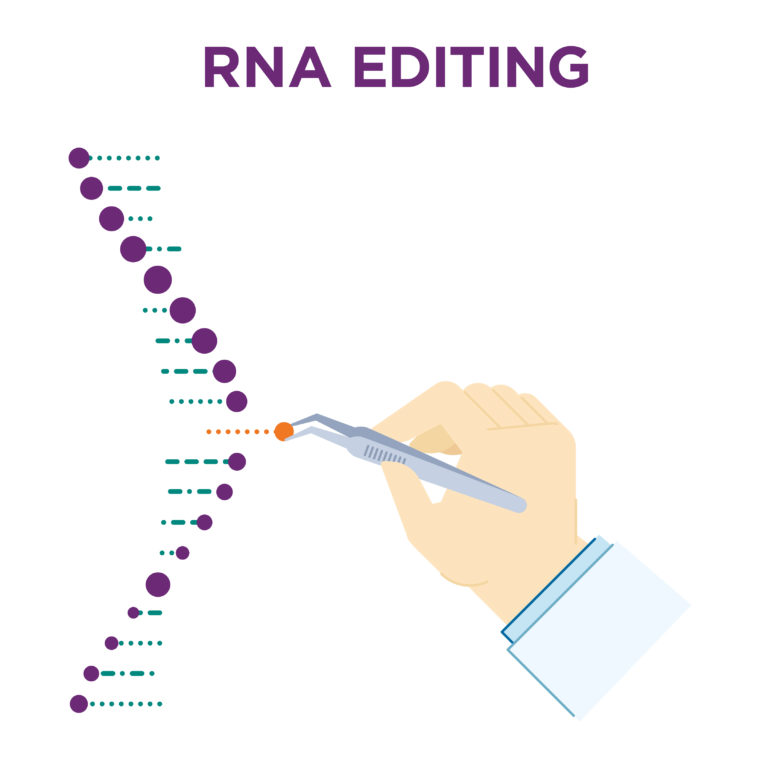Inside the Lab- with Thorsten Stafforst
 By Dr. Dominique Pichard, Chief Science Officer, IRSF
By Dr. Dominique Pichard, Chief Science Officer, IRSF
I am thrilled to share this month’s featured research with you. We are looking forward to the potentially game-changing nature of Dr. Stafforst’s research, which is why we made a major investment in his lab this year. I know that you will enjoy getting to know more about this exciting work.
RNA editing is on a fast track to becoming a transformative treatment for Rett syndrome. Dr. Thorsten Stafforst, an international leader in RNA editing research, and Philipp Reautschnig, a post-doc in Stafforst’s lab are developing a new method to convert the mutated cells of patients with Rett syndrome into healthy ones more safely and easily than other gene modifying therapy approaches.
Back in 2012, while developing tools to modulate the activity of biological molecules, the Stafforst lab invented a way to edit specific target RNAs. Such approaches are now termed site-directed RNA editing (SDRE). SDRE has recently attracted great interest and inspired further investigation by leading gene therapy experts due to its disease-altering potential.
The value of gene modifying therapy by RNA editing
Gene modifying therapies as a whole offer great promise as potentially curative treatments for genetic disorders like Rett syndrome because they target such diseases at their root cause: genetic mutations.
The most well studied gene modifying therapies rely on an approach called gene replacement. In gene replacement therapy, a working copy of a gene of interest is added to cells, effectively replacing the mutated disease-causing copy of the gene.
However it is almost always the protein product of the gene (not the gene itself) that triggers the dysfunction associated with the disease. Gene replacement addresses this issue because a healthy copy of the gene is inserted and makes a normal RNA, which in turn is used to create a working protein.

SDRE would accomplish the goal of creating a working protein by editing the short-lived middle step RNA, such that the protein made from it functions normally. Unlike other kinds of gene modifying therapy, the changes introduced via SDRE do not come with the risks associated with permanently changing a patient’s genetic code.
The Stafforst lab’s SDRE approach is exciting and unique because it leverages capabilities that the cells already have. This approach only requires the introduction of a guide RNA that directs the cell’s editing machinery (ADARs) to the RNA that needs to be edited or corrected.
“The pro side [of this approach] is mainly that you can harness [the machinery cells already have],” Stafforst explains, “and the idea is to change the [target RNA already inside cells] rather than express something new via gene replacement, which can cause problems and difficulties…We hope that it is technically simpler and [more effective].”
IRSF funding advances therapy development
The Stafforst lab’s SDRE approach has already proven effective in cell culture. The lab’s current research will determine if their RNA editing approach works safely in a mouse model of Rett syndrome.
Such research is essential if this approach is to have a chance of ever making it to the clinic. However, this work would not be possible without support from International Rett Syndrome Foundation.
The International Rett Syndrome Foundation grant awarded to the Stafforst lab gives the project resources to pursue a wider range of options for implementing their SDRE in Rett syndrome animals, thereby giving this new method of gene modifying therapy its best chance for success.
“The hope is that at the end of the project we will know if we have a promising starting point to go deeper into this and to really develop this [method] for Rett syndrome,” Stafforst said.
If it works, the Stafforst lab’s next step is to test if their SDRE method effectively treats disease symptoms.
Stafforst and Reautschnig both wish to see their approach advance to the clinic.
“It would be [incredible] to be able to cure this horrible disease,” Reautschnig says.